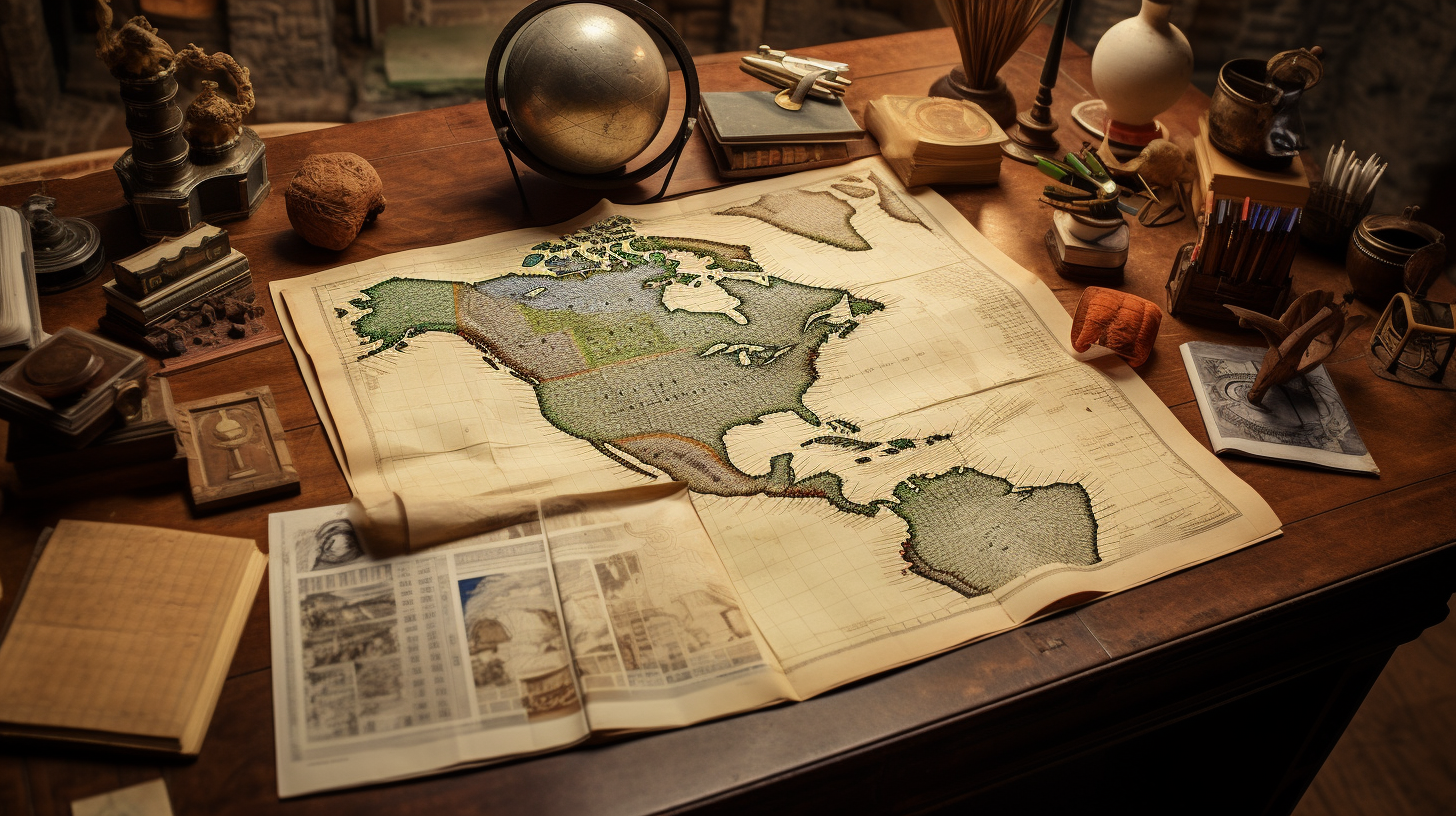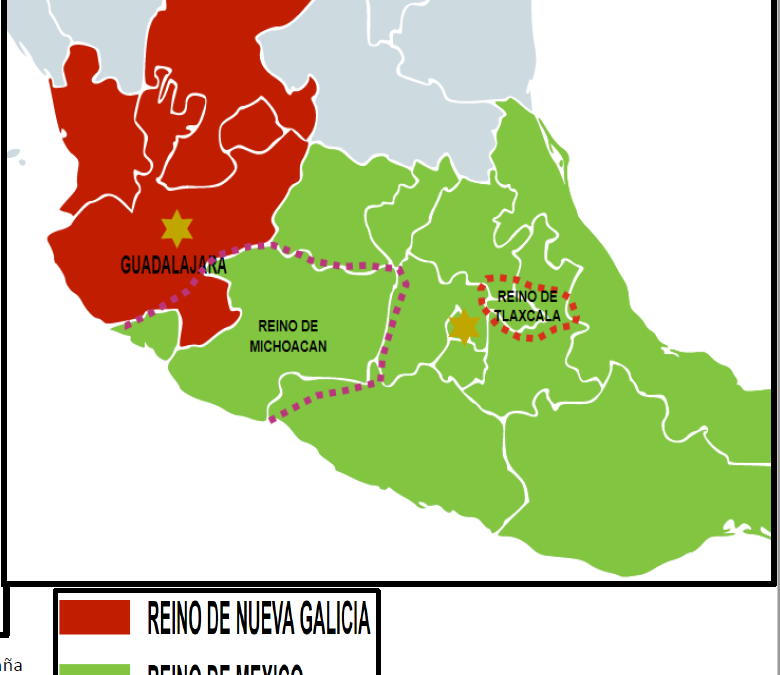
Articles

Mexican States
Southwest United States
Heritage and Governance
Mexican Colonial Migration as a Catalyst for Assimilation (1550-1821)
For centuries, Mexico has led the world in silver production. In 1546, during Mexico’s colonial period, silver was first discovered in Zacatecas, but many more mines would be opened up in the next two centuries. According to Michael M. Swann, “Migrants in the Mexican North,” the “silver centers attracted large, mixed populations from great distances.
Who Were the Chichimecas? Exploring Their Legacy
The nature of the so-called Chichimecas has varied in time and place. Originally the Spaniards and their Indigenous allies referred to the semi-nomadic people who inhabited the frontier area of Nueva Galicia as Chichimecas. They waged a 40-year-war against them. But two hundred years later, the Spaniards also used the term for the nomadic Coahuiltecan tribes of the northeast.
The Indigenous Tolentino Family of Nochistlán, Zacatecas: Seven Generations
Researching the ancestry of Indigenous families in historical Jalisco, Zacatecas, and Aguascalientes presents unique challenges. During the 17th and 18th centuries, it was common for many Indigenous People not to have consistent surnames. This inconsistency could be attributed to various factors, including changes in employment or land ownership. Unlike the Spanish who typically maintained a strong attachment to their surnames, Indigenous People often adapted or altered their surnames, sometimes opting not to use one at all. This fluid approach to naming makes tracing lineage a complex but fascinating endeavor.
Indigenous Nueva Galicia: The Native Peoples of Jalisco and Zacatecas
Established in 1548, the Spanish province of Nueva Galicia embraced 180,000 kilometers and included most of present-day Jalisco, Nayarit, Aguascalientes and Zacatecas. Across this broad range of territory a wide array of indigenous groups lived during the Sixteenth Century. The old Aztec empire had been replaced with Nueva España.
Who Were the Chichimecas?
If your ancestors are from Zacatecas, Guanajuato, Aguascalientes, Jalisco or San Luis Potosí, it is likely that you are descended from the indigenous peoples who inhabited these areas before the Spaniards arrived from the south. The historian Eric Van Young of the University of California at San Diego has called this area, the “the Center-West Region” of Mexico. This cultural region, according to Dr. Van Young, amounts to about one-tenth of Mexico’s present-day national territory.
The Indigenous History of Jalisco, Zacatecas, Guanajuato and Michoacán
Mexico’s Northern Mountainous Regions
The Sierra Madre Occidental Mountains run from Chihuahua into Durango, Zacatecas, Jalisco and farther south. The Sierra Madre Oriental Mountains run parallel to the Sierra Madre Occidental range on the eastern side of the country.
Mexico: Confrontation Between Church and State
The Cristero Rebellion affected the lives of many Mexicans. Many Mexican-American families still talk of it today. This work discusses the ideologies of the two combatants: The Mexican Government and the Catholic Church. The battles are not discussed here, but the beginning and end of the conflict are discussed as viewed by the American press.
Los Fundadores: Finding Your Spanish Ancestors in México
The following presentation offers suggestions for tracing your Mexican ancestors back to Spain or Portugal. Although we offer research suggestions and show the reader resources to locate ancestors from the Iberian Peninsula, it is important to state the following:
The Indigenous History of Jalisco, Zacatecas and Aguascalientes
Nueva Galicia’s Indigenous People: Established in 1548, the Spanish province of Nueva Galicia embraced 180,000 kilometers and included most of present-day Jalisco, Nayarit, Aguascalientes and Zacatecas.
Zacatecas: Land of the Chichimecas
As the eighth largest state of Mexico, Zacatecas has a square area of 75,284 square kilometers (29,067 square miles), equal to 3.84% of the national territory. The State of Zacatecas is divided into fifty-eight municipios, with the City of Zacatecas as its capital.
The Caxcanes of Nochistlán: Defenders of Their Homeland
Throughout human history, many groups of people have witnessed the arrival of aliens from far away countries in their traditional homeland territories. Responses to such intrusions have varied from century to century, continent to continent and from one people to another. In most cases, the invader intruded upon the economy, the resources and the political administration of the indigenous peoples. And all too often, the invader dominates and enslaves the people. Other occupations are less dramatic.
The History of Zacatecas: From La Gran Chichimeca to a Silver-Based Economy
The state of Zacatecas, located in the north-central portion of the Mexican Republic, is a land rich in cultural, religious, and historical significance. With a total of 75,539 square kilometers, Zacatecas is Mexico’s eighth largest state and occupies 3.9% of the total surface of the country. Politically, the state is divided into fifty-eight municipios and has a total of 5,064 localities, 86% of which correspond to the old haciendas.
Indigenous Zacatecas: From Contact to the Present Day
The present state of Zacatecas is located at the geographical center of Mexico. Its shares borders with eight states: Coahuila de Zaragoza (on the north), Durango (on the west), Nayarit (on the southwest, Jalisco and Aguascalientes (on the south), Guanajuato (on the southeast), San Luis Potosí (on the west) and Nuevo León (on the northwest). As the eighth largest state of Mexico, Zacatecas has a square area of 75,284 square kilometers, equal to 3.84% of the national territory. The State of Zacatecas is divided into fifty-eight municipios, with the City of Zacatecas as its capital. Its territory lies wholly within the central plateau and is traversed by Sierra Madre Occidental mountain ranges.

Article Categories
- Aguascalientes 14
- Arizona 4
- Baja California 5
- Baja California Sur 2
- California 20
- Campeche 4
- Census 36
- Chiapas 3
- Chihuahua 11
- Coahuila 7
- Colima 1
- Conquistador Chronicles 2
- Durango 2
- Ethnic Identity 41
- Genealogy 35
- Guanajuato 8
- Guerrero 8
- Hidalgo 2
- Indigenous Insights 98
- Jalisco 25
- Mexico City 11
- Michoacan 7
- Morelos 4
- Nayarit 3
- New Mexico 4
- Nuevo Leon 7
- Oaxaca 6
- Politics 10
- Puebla 5
- Queretaro 1
- Quintana Roo 4
- San Luis Potosi 11
- Sinaloa 6
- Sonora 16
- Southwest US 26
- State of Mexico 5
- Tabasco 3
- Tamaulipas 11
- Texas 7
- Tlaxcala 7
- Veracruz 6
- Yucatan 6
- Zacatecas 13














